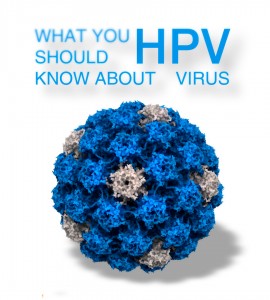Human Papilloma Virus (HPV) 
HPV is short for human papilloma virus and is consistent of more than 150 related viruses.
The most important step is that we inform you about HPV.
- Men and Women?
- Yes! Both men and women are equally susceptible to HPV. Nearly half of sexually active beings will be exposed to this virus at least once in their lifetime.
- High Risk vs Low Risk
- One detection of having Low Risk HPV, for both genders, would be genital warts. Most of the time the body clears itself of the virus and there’s no chronic damage. High Risk HPV, although most of the time it can lead to cancer, may not show any evidence at all of having it. In males, this can lead to cancer of the genitals, anus, or rectum. In females, this can lead to cervical cancer. It is very important that you give every attempt to prevent the transmission of HPV so that you and your sex partner, whether male or female, have one less cancer to worry about.
- Transmission
- Whether you are practicing vaginal or oral sex, the human papilloma virus can be spread through contact from infected genital skin, body fluids, and mucous membranes.
The next step should be to help prevent HPV from being spread or transmitted.
- Testing
- Visual Exam:to check for warts
- PAP Smear: to sample cells taken from the cervix or vagina and analyze those cells to detect cancer or the chance of having cancer.
Here are some tips so you can possibly put a stop to being diagnosed with HPV.
- avoid having sex at an early age
- avoid having multiple sex partners
- avoid any sex partners who you think might have had multiple sex partners
